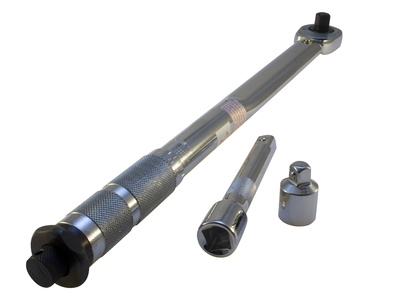
Assuming there's no major machine work to do, rebuilding an engine is simply a matter of following directions and using the right tools. While almost anyone can simply "assemble" an engine with little more than a socket set and a torque wrench, a proper rebuild requires more specialized tools.
An accurate torque wrench is by far the single most important tool in your engine rebuilding arsenal. Although you can assemble your engine with a busted old torque wrench that never gives the same reading twice, don't be surprised when the motor self-destructs a week later. The torque wrench's spring mechanism will soften over time, meaning that (even after recalibration) it won't stay accurate for long. "Click-type" torque wrenches work well, but make sure to recalibrate and test it before starting your rebuild. Even digital wrenches need recalibration from time to time.
Also referred to simply as an angle gauge, this tool is a sort of supplement to the torque wrench. A torque wrench's readings can be thrown off by bolt thread friction; an angle gauge allows you to double-check torque to ensure that every bolt is equally tightened. Even tightening is especially critical on connecting rods, which are secured to the crankshaft with two bolts. If one of them is even a couple of foot-pounds off, the other will bear the entire load of the reciprocating piston.
Although all professional engine builders use dial calipers and inside/outside micrometers to measure clearances, these tools can be an expensive investment if you're not planning to rebuild on a consistent basis. Plastigage is a waxy, plastic substance that is often used to measure bearing clearances. It's cheap and easy to use once you've gotten the hang of it and is within micrometers of a dial caliper's accuracy.
If you're a professional engine builder or are planning to rebuild more than one engine, you might want to consider a set of proper measurement tools. Dial calipers have two sides; one to measure outside clearances (like crankshaft journals) and another to measure inside diameters (like cylinders and rod caps). Dial calipers are fairly cheap and can be used to measure most parts of the engine.
Inside/outside micrometers are more expensive than dial calipers but are more accurate and versatile. These tools stay in adjustment for years and can slip far down into cylinder bores, lifter bores and intake/exhaust ports where dial calipers could never reach. A spring-loaded inside-measuring micrometer is a great tool to have if you want to check for cylinder runout (out-of-roundness) or are doing some head porting work and need to keep your measurements consistent.